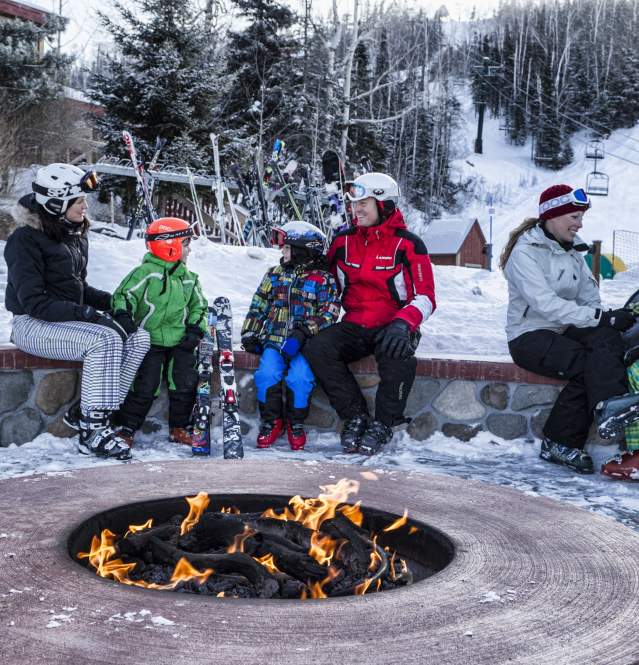Unleash Your Inner Explorer: Master Winter Survival Skills in the Wild

The call of the wild resonates strongest when the snow falls and the temperatures plummet. It’s a time when the unprepared retreat indoors, but for those with the grit and knowledge, winter offers an unparalleled opportunity for adventure and self-reliance. At Vistalocation.com, we believe in equipping you with the skills to not just survive, but thrive in the harshest of winter environments. Forget the cabin fever; it's time to embrace the elements and learn how to master winter survival skills.
This isn't just about enduring; it's about connecting with nature on a deeper level, honing your instincts, and discovering the profound satisfaction that comes from knowing you can handle anything the wilderness throws your way. So, grab your warmest gear, sharpen your knife, and prepare to unleash your inner explorer with these three essential winter survival activities.
1. Building an Igloo and Winter Camping in the Quebec Wilderness, Canada
Imagine spending a night in a shelter you built with your own hands, the stars blazing above you in the clear, crisp winter air. This isn't just a dream; it's a reality you can experience by learning to build an igloo. The Quebec wilderness provides the perfect backdrop for mastering this ancient Inuit survival technique.
The key to a successful igloo lies in proper snow selection. You need snow that is dense and well-consolidated, able to be cut into sturdy blocks. Use a snow saw or a strong knife, like the Helle Eggen, to carefully cut rectangular blocks of snow. Angle the cuts slightly inward to create a keystone effect, which helps with structural integrity. The blocks are then spiraled upwards, leaning inwards to form the dome shape.
Staying warm and dry inside your igloo in sub-zero temperatures is paramount. Ensure the floor is insulated with a layer of spruce boughs or sleeping pads. A Fjallraven Expedition Down Parka will be your best friend against the biting cold, providing unparalleled warmth and protection.
Safety First: Hypothermia and Frostbite
Recognizing the symptoms of hypothermia is critical. Shivering, slurred speech, confusion, and drowsiness are all warning signs. If you or someone in your party exhibits these symptoms, seek immediate shelter and warmth. Frostbite, which damages skin and tissue due to freezing, can be prevented by keeping extremities covered and dry.
For a guided experience in igloo building and winter camping, we recommend contacting Laurentian Expeditions. Their expert instructors specialize in Inuit survival techniques and will guide you through every step of the process, ensuring a safe and unforgettable adventure. [vistalocation.com]

2. Cross-Country Skiing and Wilderness Navigation in the Swedish Lapland
The vast, snow-covered landscapes of the Swedish Lapland offer a unique playground for cross-country skiing and wilderness navigation. This isn't just a leisurely ski trip; it's an exercise in self-reliance and the ability to read and interpret the land around you.
Cross-country skiing is an efficient way to traverse snowy terrain, allowing you to cover significant distances with minimal effort. Mastering the basics of classic or skate skiing techniques is essential. More important is knowing where you are going.
A Silva Expedition compass and detailed maps are your lifeline in the Lapland wilderness. Learn how to take bearings, triangulate your position, and navigate using terrain features. Whiteout conditions can be particularly challenging, making map and compass skills even more crucial. Using the sun's position (when visible) and subtle changes in terrain can help maintain your bearing.
Avalanche awareness is also critical. Understand the factors that contribute to avalanche risk, learn how to identify avalanche terrain, and always check the local avalanche forecast before venturing out. Safe route planning is paramount, and it's often wise to stick to established trails, especially when starting out.

For a guided experience in cross-country skiing and wilderness navigation, consider booking a tour with Arctic Trek Sweden. They are renowned for their expert wilderness navigation courses and their in-depth knowledge of the Lapland environment. Pack a reliable Silva Expedition compass, durable ski bindings, and moisture-wicking base layers from Icebreaker to stay comfortable and prepared. [vistalocation.com]
3. Winter Foraging and Fire Starting Workshop in the Scottish Highlands
The Scottish Highlands in winter may seem barren, but hidden beneath the snow and amongst the hardy trees, there's a surprising amount of sustenance to be found. Learning winter foraging and fire-starting skills are essential for survival in this dramatic landscape.
Identifying edible plants and fungi in winter requires a keen eye and thorough knowledge. Certain berries, roots, and fungi remain visible even under a blanket of snow. However, caution is paramount. Never consume anything you cannot positively identify as safe to eat. Start with easily identifiable and common plants.
Building a fire in wet, cold conditions can be a challenge. Finding dry tinder is often the biggest hurdle. Look for dead, standing wood that has been sheltered from the rain and snow. Birch bark is an excellent natural fire starter, even when wet. A ferro rod fire starter is a reliable tool for generating sparks, and a sturdy knife, like a Morakniv, is indispensable for preparing tinder and kindling. Protect your fire from wind and snow by building a small shelter around it.
Ethical Foraging: Respecting the Environment
Practice ethical foraging by only taking what you need and leaving plenty for wildlife. Avoid damaging plants or disturbing the ecosystem. Always obtain permission before foraging on private land.
To learn these skills from experienced instructors, book a workshop with Highland Bushcraft Academy. They are known for their traditional Highland survival skills training and their commitment to environmental stewardship. Ensure you pack a reliable ferro rod fire starter, a sturdy knife such as a Morakniv, and warm gloves to protect your hands. [vistalocation.com]
Leave No Trace: Respecting the Wilderness
No matter which winter survival activity you choose, it's crucial to respect the environment and practice Leave No Trace principles. Pack out everything you pack in, minimize your impact on the landscape, and leave the wilderness as you found it. Remember, we are all stewards of these precious natural resources.
Your Winter Survival Journey Starts Now
Mastering winter survival skills is not just about preparing for the worst; it's about embracing the challenge, connecting with nature, and discovering your own inner strength. Explore the trip options and resources available on Vistalocation.com and embark on your journey to winter self-reliance today! Start planning your next winter adventure! [vistalocation.com]